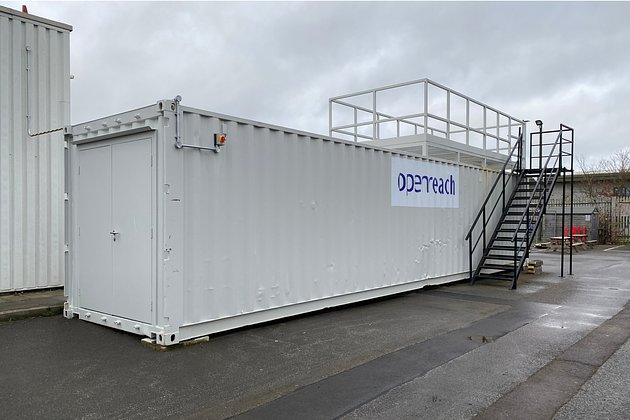In the world of chemistry and industrial processes, the proper storage of chemicals is paramount. Chemicals can be volatile, corrosive, toxic, or reactive, and mishandling them can lead to serious consequences, including health hazards, environmental damage, and financial losses. This is where chemical storage containers play a crucial role. These specialized vessels are designed to safely house a wide range of chemicals, ensuring that they are stored in a manner that minimizes risks and maximizes efficiency. This article delves into the importance of chemical storage containers, their types, materials, and best practices for their use.
The Role of Chemical Storage Containers
Chemical storage containers are essential for both laboratory settings and industrial operations. They serve several key functions:
Safety: Preventing leaks, spills, and contamination is critical. Proper storage containers are designed to withstand the specific properties of the chemicals they hold, ensuring that these substances remain contained and safe.
Regulation Compliance: Many countries have strict regulations governing the storage of chemicals. Using the right containers helps ensure that these regulations are met, avoiding legal issues and fines.

Environmental Protection: Chemicals can be harmful to the environment. Proper storage prevents accidental releases that could contaminate soil, water, and air.
Economic Efficiency: Spills and leaks can result in the loss of valuable chemicals and increased cleanup costs. Robust storage containers help preserve these resources and reduce waste.
Types of Chemical Storage Containers
Chemical storage containers come in various shapes and sizes, each suited to different chemicals and environments. Here are some common types:
Drums and Barrels:
- 55-gallon drums are widely used in industrial settings for storing large quantities of liquids.
- Intermediate Bulk Containers (IBC) are larger, typically holding between 275 and 330 gallons, and are ideal for bulk storage and transportation.
Bottles and Jars:
- Glass bottles are often used for laboratory storage due to their inertness and transparency.
- Plastic bottles are preferred for their lightweight and resistance to certain chemicals.
Tanks and Vessels:
- Fiberglass tanks are resistant to corrosion and are commonly used for storing corrosive chemicals.
- Polyethylene tanks are lightweight and can handle a broad range of chemicals, including acids and solvents.
Cylinders:
- Gas cylinders are used for storing compressed gases, including oxygen, nitrogen, and hydrogen.
- Refrigerated cylinders are used for gases that need to be kept at low temperatures.
Carboys:
- Larger than bottles but smaller than drums, carboys are often used for transporting and storing chemicals in moderate quantities.
Materials Used in Chemical Storage Containers
The material of a storage container is chosen based on the chemical it will hold and the environmental conditions it will endure. Common materials include:
Glass:
- Inert and transparent, making it ideal for observing the chemical's state.
- Not suitable for storing highly reactive or corrosive chemicals due to its fragility.
Plastic:
- Polyethylene (PE) and Polypropylene (PP) are widely used for their chemical resistance and durability.
- High-Density Polyethylene (HDPE) is particularly resistant to a wide range of chemicals and is often used for industrial applications.
Metal:
- Stainless steel is resistant to corrosion and is suitable for storing strong acids and alkalis.
- Aluminum is lightweight and resistant to corrosion but may react with certain chemicals.
Fiberglass:
- Resistant to a wide range of chemicals, including corrosive substances.
- Durable and long-lasting, making it a popular choice for industrial tanks.
Composite Materials:
- Combination of materials such as fiberglass-reinforced plastic (FRP) offers enhanced resistance and durability.
- Used for specialized applications where high strength and chemical resistance are required.
Best Practices for Chemical Storage
Proper use and maintenance of Chemical Storage Containers, simply click the up coming post, are essential to ensure their effectiveness. Here are some best practices:
Labeling:
- Clearly label all containers with the chemical name, concentration, hazards, and date of storage.
- Use standardized symbols and color codes to indicate specific hazards.
** Compatibility**:
- Select containers that are compatible with the chemicals they will store. Refer to the Material Safety Data Sheets (MSDS) for compatibility information.
- Avoid storing incompatible chemicals in close proximity to prevent reactions and accidents.
Ventilation:
- Ensure adequate ventilation in storage areas to prevent the accumulation of hazardous fumes.
- Install fume hoods or exhaust systems in enclosed spaces.
Temperature Control:
- Store chemicals in a cool, dry place to maintain their stability and extend their shelf life.
- Use refrigerated or heated storage units for chemicals that require specific temperature conditions.
Inspection and Maintenance:
- Regularly inspect containers for signs of damage, corrosion, or leaks.
- Replace or repair damaged containers immediately to prevent accidents.
** Secondary Containment**:
- Use secondary containment such as spill trays or berms to catch any leaks or spills.
- Regularly check secondary containment systems to ensure they are functioning properly.
FAQs About Chemical Storage Containers
What are the most important factors to consider when choosing a chemical storage container?
- Compatibility: Ensure the container material is compatible with the chemical.
- Capacity: Choose the right size to store the amount of chemical needed.
- Regulations: Comply with local, state, and federal regulations for chemical storage.
Are glass containers always safe for chemical storage?
- Glass containers are generally safe for many chemicals due to their inertness, but they are not suitable for highly reactive or corrosive chemicals. They are also fragile and can break if mishandled.
How often should chemical storage containers be inspected?
- Inspections should be conducted regularly, at least monthly, to check for any signs of damage or wear. More frequent inspections may be necessary for highly hazardous chemicals.
What is secondary containment, and why is it important?
- Secondary containment is an additional barrier to prevent leaks or spills from reaching the environment. It is important because it provides an extra layer of safety and helps in containing any accidental releases.
Can I store chemicals in repurposed containers?
- It is generally not recommended to store chemicals in repurposed containers. Original containers are designed to meet specific safety and regulatory standards, and using them ensures the highest level of safety.
What should I do if I detect a leak in a chemical storage container?
- Evacuate the area immediately if the chemical is hazardous.
- Wear appropriate personal protective equipment (PPE).
- Contain the leak using absorbent materials or secondary containment.
- Report the incident to the appropriate authorities and follow your organization's emergency response plan.
Chemical storage containers are not just vessels for holding substances; they are critical components of a safe and efficient chemical management system. By understanding the types of containers available, their materials, and the best practices for their use, organizations can mitigate risks and ensure compliance with regulations. Proper storage not only protects the health and safety of personnel but also safeguards the environment and preserves valuable resources. Whether in a laboratory or an industrial setting, the right chemical storage container is a cornerstone of responsible chemical handling.
Additional Resources
For more detailed information on chemical storage and safety, consider the following resources:
- Occupational Safety and Health Administration (OSHA): Provides guidelines and regulations for chemical storage in the workplace.
- Environmental Protection Agency (EPA): Offers information on environmental regulations and best practices for chemical storage.
- Material Safety Data Sheets (MSDS): Essential for understanding the specific properties and hazards of chemicals.
- Chemical Safety Board (CSB): Investigates chemical accidents and provides recommendations to prevent future incidents.
By adhering to these guidelines and resources, organizations can ensure that their chemical storage practices are both safe and effective.








